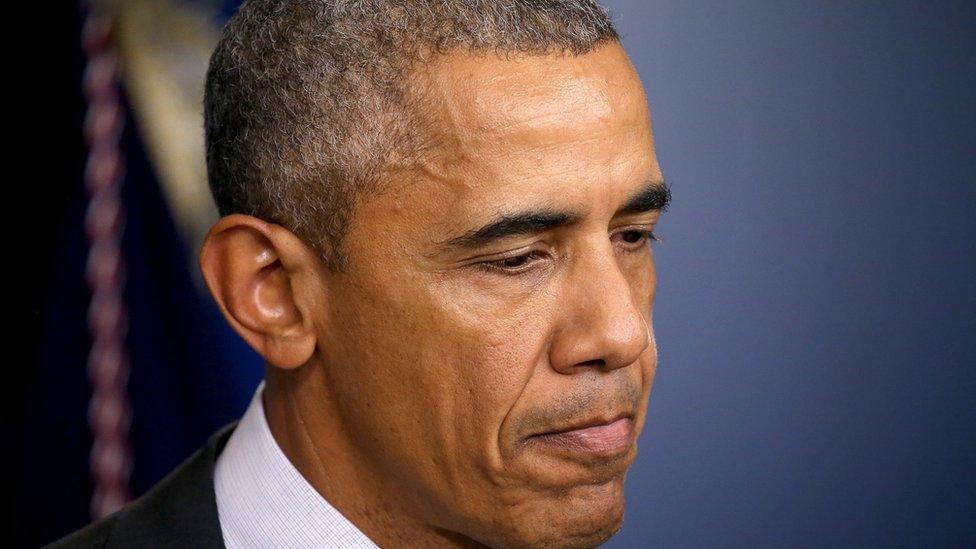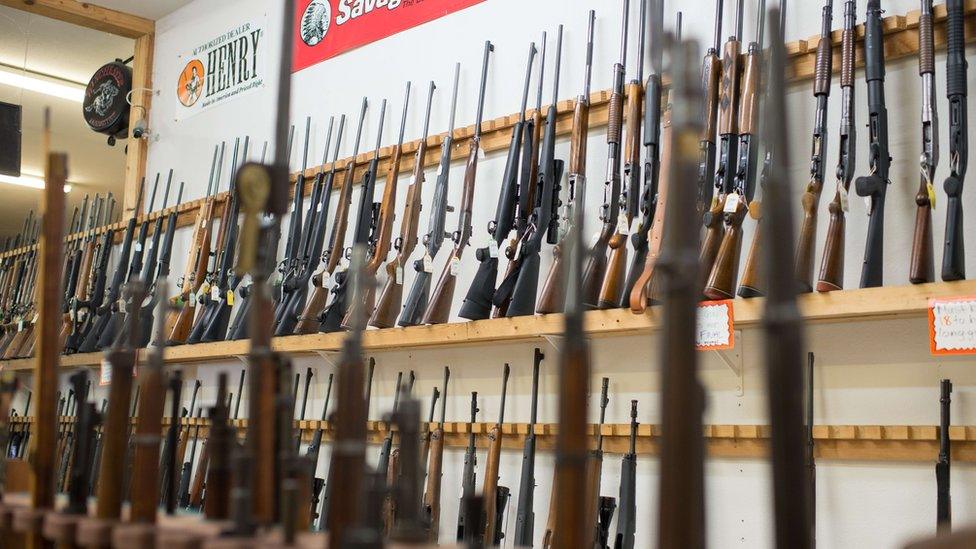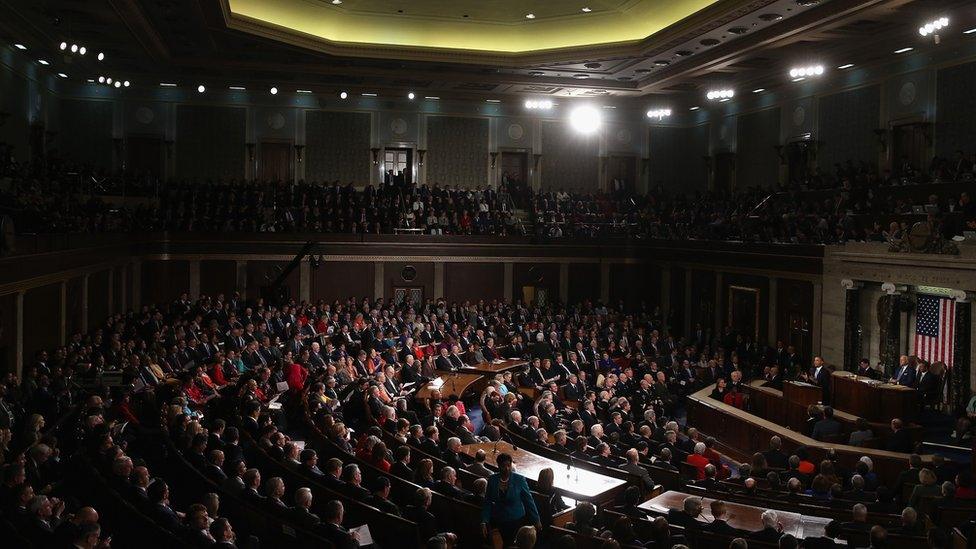Why Obama is powerless to reform gun laws
- Published

President Barack Obama stood in the White House briefing room and, once again, railed against those who object to increased firearm regulation.
"Right now, I can imagine the press releases being cranked out," he said, external. "We need more guns, they'll argue. Fewer gun safety laws. Does anybody really believe that?"
Mr Obama cited polls that find "the majority of Americans understand we should be changing these laws".
A mid-July survey by the Pew Research Center seems to support, external his claim. Almost 80% of respondents backed laws preventing the mentally ill from purchasing firearms, and 70% were in favour of a national gun-sale database.
So the public support it, why doesn't it happen?
Those numbers don't really mean much, however. What does matter is the opinion of members of the US Congress - and that legislative body is overwhelmingly against further gun regulation.
This disposition of Congress is a reflection of the disproportionate power of less-populated states in the Senate, the conservative-leaning composition of the current House congressional map and a Republican primary process that makes officeholders more sensitive to vehemently pro-gun-rights voters within their party.
Congress doesn't have to represent the views of the majority of Americans, at least as expressed in opinion surveys. It represents the views of Americans who go at the polls on Election Day and the simple majorities in the voting districts in which they cast their ballots.

Weapons on display at a gun shop near where the shooting happened
Can't the states do their own thing?
In the Senate - which currently has 54 Republicans and 46 Democrats (or Democratic-supporting independents) - the individual state populations are the key. The votes of Senators John Barrasso and Mike Enzi in pro-gun Wyoming (population 584,153) have the same weight as gun-control-backing Senators Dianne Feinstein and Barbara Boxer in California (population 38.8 million).
And when it comes to the most divisive proposal queried in the Pew poll - a ban on assault weapons that is supported by 70% of Democrats but only 48% of Republicans - just seven states, including California, have enacted similar measures for their jurisdictions. The large majorities backing gun control in Illinois, for instance, are more than outweighed by pro-gun states like Alaska, Nebraska and Alabama, with a fraction of its population.
Where in Congress is the blockage?
In the House of Representatives - which has a 58-vote Republican majority - the divergence between national polls and the political reality within the chamber is even more stark.
Thanks to city-rural demographic trends in which pro-regulation liberals tend to live - and vote - in dense urban centres and state-level efforts by Republican-controlled legislatures to draw advantageous voting districts, many state congressional delegations trend more conservative than the general US voting population.
In 2012, for instance, Mr Obama carried 50.6% of the US vote, but Republican Mitt Romney won more votes in 226 of the nation's 435 congressional districts. Overall, Democratic House candidates received, external 1.4 million more votes than Republicans, but the conservative party won 33 more seats.

The US Congress has blocked all gun-control efforts in recent years
In 2014, 44% of Pennsylvania residents voted for Democratic House candidates, but they only won, external 27% of that state's seats.
And those victorious Republican candidates are selected in primaries where the financial support of deep-pocketed pro-gun lobbying groups like the National Rifle Association can prove decisive and the voters who turn out are the kind of conservatives who don't take kindly to a candidate in favour of greater restrictions on gun ownership.
It's a political environment where Republican officeholders face grassroot challenges if they're deemed insufficiently conservative but never if they're not moderate enough.
Congress isn't just against high-profile gun regulation - even measures supported by a large majority of the American people - it also prohibits, external federal efforts to conduct research on the causes of gun violence.
So what's the way forward?
"This is a political choice that we make to allow this to happen every few months in America," Mr Obama said in Thursday's press conference. "If you think this is a problem, then you should expect your elected officials to reflect your views."
During the 2014 mid-term elections, just 36%, external of eligible voters went to the polls. And more of them, at least in states and congressional districts where it counts, voted for Republican candidates picked in primaries by just 9.5%, external of US registered voters.
In the US today, it's the gun-control views of that 9.5% that make the difference.